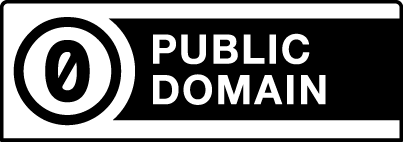- Title:
- The Bench
- Date:
- 1758
- Materials & Techniques:
- Etching and engraving on medium, slightly textured, cream laid paper
- Dimensions:
- Sheet: 12 3/8 × 8 1/4 inches (31.4 × 21 cm), Plate: 7 3/8 × 8 1/8 inches (18.7 × 20.6 cm), Plate: 4 1/2 × 8 1/4 inches (11.4 × 21 cm), Image: 6 5/8 × 7 3/4 inches (16.8 × 19.7 cm)
- Inscription(s)/Marks/Lettering:
Lettered below image, lower center: "The BENCH."; lower left: "Design'd & Engrav'd by W. Hogarth"; lower right: "Publish'd as the Acts directs, 4 Sep. 1758."; lower center: "Of the different meaning of the Words Character, Caracatura, and Outrè in Painting and Drawing."; lower center: "There are hardly any two things more essentially different than Character and Caracatura, nevertheless | they are usually confounded and mistaken for each other; on which account this Explanation is attempted. | It has ever been allow'd that, when a Character is strongly mark'd in the living Face, it may be consider'd as | an Index of the mind, to express which with any degree of justness in Painting, requires the utmost Efforts of a great | Master. Now that which has, of late Years, got the name of Caracatura, is, or ought to be totally divested of every | Stroke that hath a tendency to good Drawing: it may be said to be a Species of Lines that are produc'd rather by the | hand of chance than of Skill; for the early Scrawlings of a Child which do but barely hint an Idea of an Human | Face, will always be found to be like some Person or other, and will often form such a Comical Resemblance | as in all probability the most eminent Caracaturers of these times will not be able to equal with Design, be | cause their Ideas of Obje^cts are so much more perfect than Children's, that they will unavoidably introduce some | kind of Drawing: for all the humourous Effects of the fashionable manner of Caracaturing chiefly depend on the surprize we are under at finding ourselves caught with any sort of Similitude in objects absolutely re- | mote in their kind. Let it be observ'd the more remote in their Nature the greater is the Excellence of these | Pieces; as a proof of this, I remember a famous Caracatura of a certain Italian Singer, that Struck at | first sight, which consisted only of a Streight perpendicular Stroke with a Dot over it. As to the French | word Outrè it is different from the foregoing, and signifies nothing more than the exag^gerated | outlines of a Figure, all the parts of which may be in other respects a perfect and true Picture of | Nature. A Giant ^ or a Dwarf may be call'd a common Man Outrè. So any part as a Nose, or a Leg, made | bigger ^ or less than it ought to be, is that part Outrè, † which is all that is to be understood by this word, so | injudiciously us'd to the prejudice of Character. --- See Excess Analysis of Beauty. Chap. 6. | *** The unfinish'd Groupe of Heads in the upper part of this Print was added by the Author in Octr 1764: & was intended as | a further Illustration of what is here said concerning Character Caracatura & Outrè, He worked upon it the Day before his Death | which happened the 26th. of that Month."
- Credit Line:
- Yale Center for British Art, Paul Mellon Collection
- Copyright Status:
- Public domain
- Accession Number:
- B1981.25.1452
- Classification:
- Prints
- Collection:
- Prints and Drawings
- Access:
- Accessible in the Study Room [Request]
- Link:
- https://collections.britishart.yale.edu/catalog/tms:42061
- Export:
- XML
- IIIF Manifest:
- JSON
Douglas Fordham, British art and the Seven Years' War, allegiance and autonomy , University of Pennsylvania Press, Philadelphia, 2010, pp. 91-92, fig. 30, N72.P6 F66 2010 (YCBA) [YCBA]

